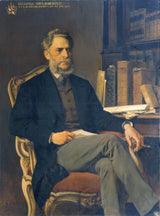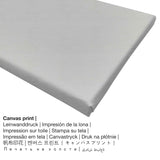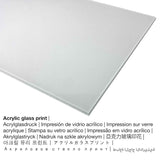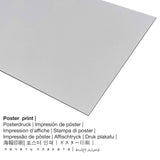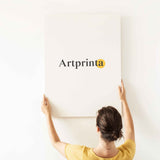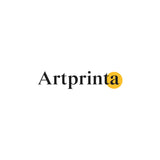August Eisenmenger, 1882 - Leo Graf Thun-Hohenstein - ọmarịcha nka
Ụtụ gụnyere. Mbupu gbakọrọ na ndenye ọpụpụ.
Ozi ndabere ngwaahịa
In 1882 August Eisenmenger made the 19th narị afọ work of art. The original version measures the size: 151 x 112 cm - etiti: 190 x 152 x 15 cm e were kwa ihe-ọcha tee ya mmanụ na kwaaji. Ihe nka izizi nwere ihe odide a: signed and dated lower left: A.EISENMENGER / PINXIT 1882; Name top left: LEO COMES TUNA-HOHENSTEIN / S · C · R · AP · MAJ · · ACT CONS INT · ET · CAM · AET · · SUAE LXXI.. The piece of art is part of the Belvedere's digital art collection in Vienna, Austria. Site n'ikike nke - © Belvedere, Vienna, nọmba ngwa ahịa: 228 (nwere ikike: ngalaba ọha). The creditline of the artwork is the following: order with the artists and Purchase from by k. k. Ministry of Culture and Education in 1889. In addition to this, the alignment of the digital reproduction is Eserese ya na oke akụkụ nke 3: 4, nke pụtara na ogologo bụ 25% mkpụmkpụ karịa obosara. The painter August Eisenmenger was a European artist, whose art style was primarily Realism. The Realist artist was born in 1830 na Vienna ma nwụọ na afọ nke 77 na 1907 na Vienna.
Nweta ụdị ngwaahịa ngwaahịa gị
Maka ngwaahịa ọ bụla anyị na-enye ụdị nha & ihe dị iche iche. Anyị na-ahapụ gị ka ịhọrọ nha na akụrụngwa ọkacha mmasị gị n'etiti nhọrọ nhazi ngwaahịa ndị a:
- Mbipụta kwaaji: A printed canvas, not to be mistaken with a canvas painting, is a digital image applied directly on canvas. It makes a unique look of three dimensionality. Your canvas print of your favorite work of art will provide you with the opportunity to transform your new art print into a large size artwork like you know from galleries. The advantage of canvas prints is that they are relatively low in weight, which implies that it is quite simple to hang up your Canvas print without the help of additional wall-mounts. Canvas prints are suited for any type of wall.
- Bipụta na iko acrylic na-egbuke egbuke (nke nwere ezigbo mkpuchi iko): An print on acrylic glass, often referred to as a print on plexiglass, will convert your favorite artwork into décor. Furthermore, it offers a distinct alternative to canvas or dibond fine art replicas. The great benefit of a plexiglass art print is that contrasts and smaller color details become exposed with the help of the very fine tonal gradation of the picture. Our acrylic glass protects your selected fine art print against light and heat for between 40-60 years.
- Mbipụta aluminom (aluminium dibbond): An Aluminium Dibond print is a print material with an impressive effect of depth, which creates a contemporary look by having a non-reflective surface. A direct Aluminium Dibond Print is your perfect introduction to fine art reproductions with alu. For the Aluminium Dibond option, we print the artpiece onto the aluminium composite surface. The bright and white sections of the original work of art shine with a silky gloss, however without glare.
- Akwụkwọ mmado ebipụtara (ihe kwaaji): A poster print is a printed canvas with a fine structure on the surface. Please bear in mind, that depending on the absolute size of the poster we add a white margin of around 2-6cm around the print motif in order to facilitate the framing with your custom frame.
Ihe dị mkpa: We try whatever we can in order to depict the art products as accurately as possible and to display them visually on the respective product detail pages. Nevertheless, the tone of the printing material and the printing might differ to a certain extent from the presentation on the device's monitor. Depending on your settings of your screen and the condition of the surface, not all color pigments are printed one hundret percent realistically. Bearing in mind that all our fine art prints are processed and printed by hand, there might also be slight discrepancies in the motif's exact position and the size.
Product ọmụma
| Nkewa edemede: | nka nka |
| Usoro mmeputakwa: | mmeputakwa n'ụdị dijitalụ |
| Produzọ mmepụta: | UV kpọmkwem obibi |
| Ihe ngosi: | German mmepụta |
| Ụdị ngwaahịa: | a na-achọ |
| Ihe eji eme atụmatụ: | nka mgbidi, art mmeputakwa gallery |
| Nhazi: | usoro eserese |
| Oke akụkụ onyonyo: | ogologo ruo obosara 3: 4 |
| Nkọwa: | ogologo bụ 25% mkpụmkpụ karịa obosara |
| Akụrụngwa ị nwere ike ịhọrọ: | akwụkwọ mmado (akwụkwọ kwaaji), mbipụta enyo acrylic (nke nwere ezigbo mkpuchi iko), mbipụta ọla (aluminium dibond), mbipụta kwaaji |
| Ọdịiche dị n'okirikiri akwa akwa akwa (akwa akwa): | 30x40cm - 12x16", 60x80cm - 24x31", 90x120cm - 35x47", 120x160cm - 47x63" |
| Mbipụta iko acrylic (nwere ezigbo mkpuchi iko) nhọrọ nha: | 30x40cm - 12x16", 60x80cm - 24x31", 90x120cm - 35x47", 120x160cm - 47x63" |
| Mpempe akwụkwọ mmado (akwụkwọ kwaaji) nha: | 30x40cm - 12x16", 60x80cm - 24x31", 90x120cm - 35x47" |
| Nhọrọ nha nha nke Dibond (ihe alumnium): | 30x40cm - 12x16", 60x80cm - 24x31", 90x120cm - 35x47" |
| ụba: | biko mara na ngwaahịa a enweghị etiti |
Nkọwapụta nka nka
| Aha eserese: | "Leo Graf Thun-Hohenstein" |
| Nhazi nka: | sere |
| Okwu mkpokọta: | nkà nke oge a |
| Time: | 19th narị afọ |
| Emepụtara n'afọ: | 1882 |
| Ogologo afọ nka nka: | karịa afọ 130 |
| Ọkara nke ihe osise izizi: | mmanụ na kwaaji |
| Akụkụ izizi: | 151 x 112 cm - etiti: 190 x 152 x 15 cm |
| mbinye aka na ihe osise: | signed and dated lower left: A.EISENMENGER / PINXIT 1882; Name top left: LEO COMES TUNA-HOHENSTEIN / S · C · R · AP · MAJ · · ACT CONS INT · ET · CAM · AET · · SUAE LXXI. |
| Ụlọ ihe ngosi nka / mkpokọta: | Belvedere |
| Ebe ngosi nka: | Vienna, Austria |
| Weebụsaịtị nke ihe ngosi nka: | www.belvedere.at |
| Licensedị ikike: | ngalaba ọha |
| Site n'aka: | © Belvedere, Vienna, nọmba ngwa ahịa: 228 |
| kreditline ọrụ nka: | Nye iwu na ndị nka na ịzụrụ site na kk Ministry of Culture and Education na 1889 |
Ozi ndabere izugbe gbasara onye na-ese ihe
| Ihe nkiri: | August Eisenmenger |
| Aha utu aha: | eisenmenger, eisenmenger aug., a. eisenmenger, August Eisenmenger, Eisenmenger August |
| Gender: | nwoke |
| Obodo onye nka: | Ọstrịa |
| Ọrụ: | onye na-ese ihe |
| Mba onye si: | Austria |
| nhazi ọkwa: | omenkà nke oge a |
| styles: | Ihe ngosi |
| Nwụrụ na afọ nke: | 77 afọ |
| Afọ amụrụ: | 1830 |
| Ebe omuma: | Vienna |
| Afọ ọnwụ: | 1907 |
| Ebe ọnwụ: | Vienna |
© echebe nwebiisinka | Artprinta (www.artprinta.com)
Nkọwapụta nka nka izizi sitere na webụsaịtị ihe ngosi nka (© Nwebiisinka - nke Belvedere - www.belvedere.at)
Leopold (Leo) Graf von Thun und Hohenstein, born on 7 April 1811 Decin, died on 17 December 1888 in Vienna, was an Austrian politician and author. He was one of the fathers of political Catholicism. After studying law at the Charles University in Prague went from Thun in 1836 in the Austrian civil service. 1848 appointment as Gubernialpräsidenten in Bohemia and 1849. He was appointed as Minister of Culture and Education. During his term of office lasting until 1860 reformed Thun the Austrian education system. formed a basis for the proposals made by Franz S. Exner in the sense of religious tolerance. He introduced the university autonomy in Austria and structured the Vienna Academy of Sciences new. Scientists Protestant or Jewish faith received authorization to teach at the universities and well-known foreign scholars were appointed to the country. The Evangelical theological educational institution received the status of a faculty, the Austrian Institute of Historical Research was converted Nationale des Chartes into a modern training center modeled on the Ecole. Thun was one of the fathers of the Concordat of 1855, which transferred the Catholic Church full capabilities of the state. As chairman of the Catholic conservatives he became involved in 1860 unsuccessfully for a creation of a federal Austrian state with a large degree of autonomy of the entities. On order of k. k. Ministry of Culture and Education copied Eisenmenger his portrait of tuna. This second version was for the mansion determined (see. Inv 156). [Dietrun Otten, 2009]

